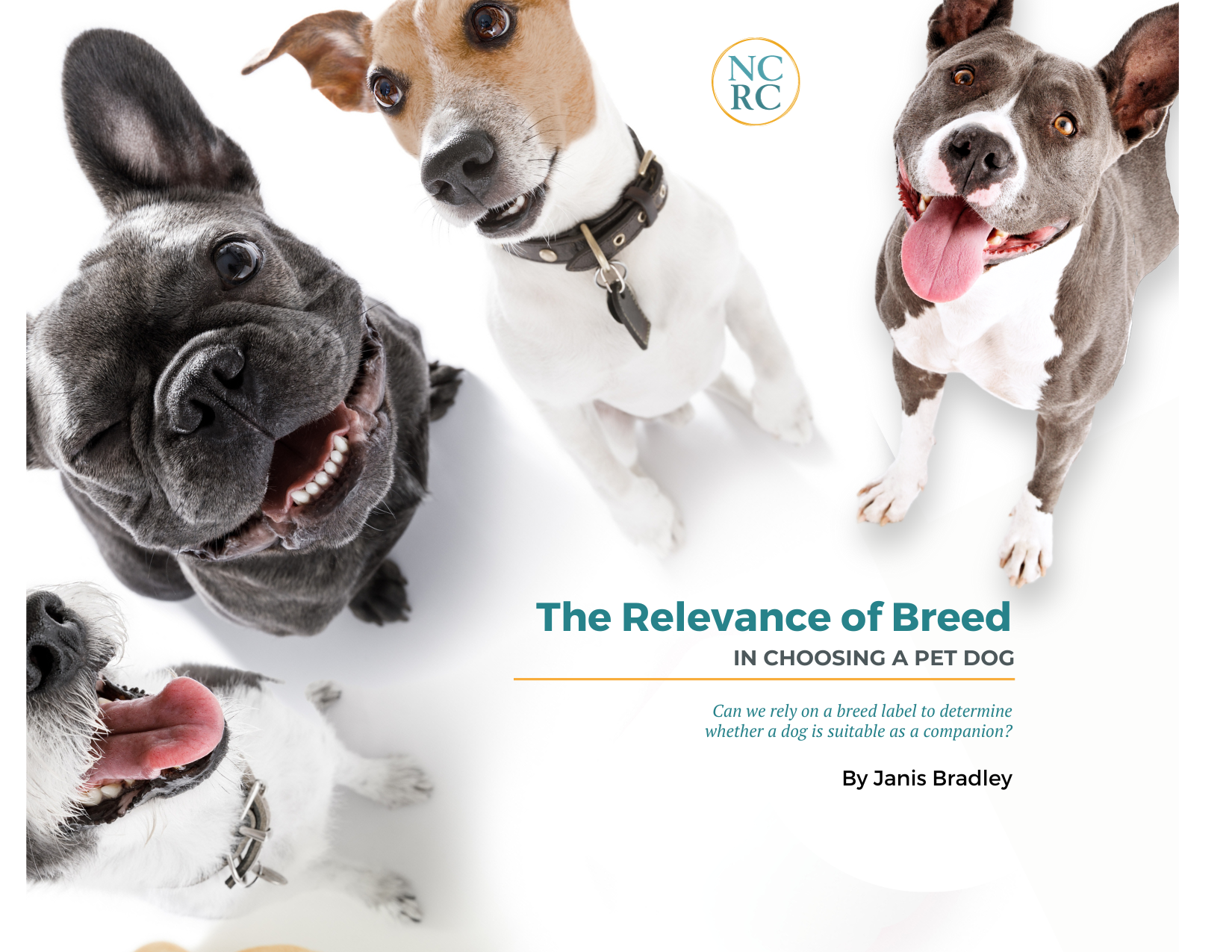This spring, when Science published “Ancestry-inclusive dog genomics challenges popular breed stereotypes,” the reactions among dog people—owners, trainers, behaviorists, rescuers—were enormous. The study, which surveyed 18,385 dogs and sequenced the DNA of 2155 of them, found that breed identification, in both pure-bred and mixed breed dogs, offered little correlation to behavior on all but one of 8 behavior factors identified by the researchers. Combining all 8 factors showed only 9% of the variation to be attributable to breed ancestry. Strikingly, on the group of traits labeled “agonistic threshold” (a more precise name for what people often think of as “aggression”), a dog’s breed had no discernable predictive value at all. Only “biddability” had much connection to breed. Biddability is defined as “how readily the dog responds to human direction,” the sort of thing people often think of as how easy a dog is to train.
Major news media picked up the study and quickly posted feature articles that condensed the findings into alluring titles: “They’re all Good Dogs, And it Has Nothing to Do with Their Breed,” “It’s Time to Rethink Dog Breed Stereotypes,” “Humans Can’t Quit a Basic Myth about Dog Breeds.”
As is often the case when science challenges the ways we think about our best friends, there has been much heated debate on social media regarding the findings. Beliefs about connections between breeds and particular personality traits have been deeply embedded in conventional wisdom for a very long time. We’ve often spent our whole lives hearing and making remarks like, “that’s the Lab in him,” to explain almost any behavior. And of course, the condensed, simplified, reader friendly interpretations offered by mainstream media can make research findings seem much more absolute than they actually are, eliciting much in the way of “yes but” responses.
Fortunately, nearly all the popular coverage included links to the actual study which is available to everyone, as it’s open access. Ancestry-inclusive dog genomics challenges popular breed stereotypes | Science The research was conducted at the Broad Institute, a collaboration of Harvard and MIT, and is complex and dense and requires a deep slow dive. Happily, though, the figures that illustrate the main findings are so accessible that they offer a good way in for any readers who want to see and judge for themselves.
Here at NCRC, we weren’t surprised by the findings. Our white paper, “The Relevance of Breed in Selecting a Companion Dog,” published in 2011, presented similar hypotheses. In it, Janis Bradley pulled together the conclusions of dozens of smaller studies that all pointed to a common conclusion: breed isn’t a great predictor of behavior, even in dogs bred selectively for specific traits.
But this remarkable new study does more than that. It is the first to compare genetic and behavioral data on a single large sample of subjects. Earlier studies either collected behavior information on one group of dogs and genetic information from a completely different group or even collected no behavioral data at all, simply relying on breed club descriptions of behavior. And the Darwin’s Ark study is the first to include a representative sample of mixed breed dogs. Earlier studies all focused on dogs identified as purebreds, thus muddying any distinction between genetic influence per se, and that part that might correlate with breed. And those groundbreaking approaches to the question of the connection between canine breeds and behavior make this a truly cutting edge work of science.
How revolutionary is it? Well it may just reset how we all think about and talk about dog behavior moving forward. And it will also change the way trainers and companions work to modify behavior, because when we remove breed as an indicator of behavior, then a dog’s behavior comes down to just a few things: its individual temperament; its training and handling; and its environment. It isn’t the breed any more, and by recognizing the individual nature of dogs, we can better help them and the people around them live successfully together.
Because of the paper’s importance, depth, and complexity, we’re going to take our time and unpack it for you in a series of articles, taking a look at particular aspects that make this such a crucial piece of foundational knowledge for anyone who cares about dogs.







